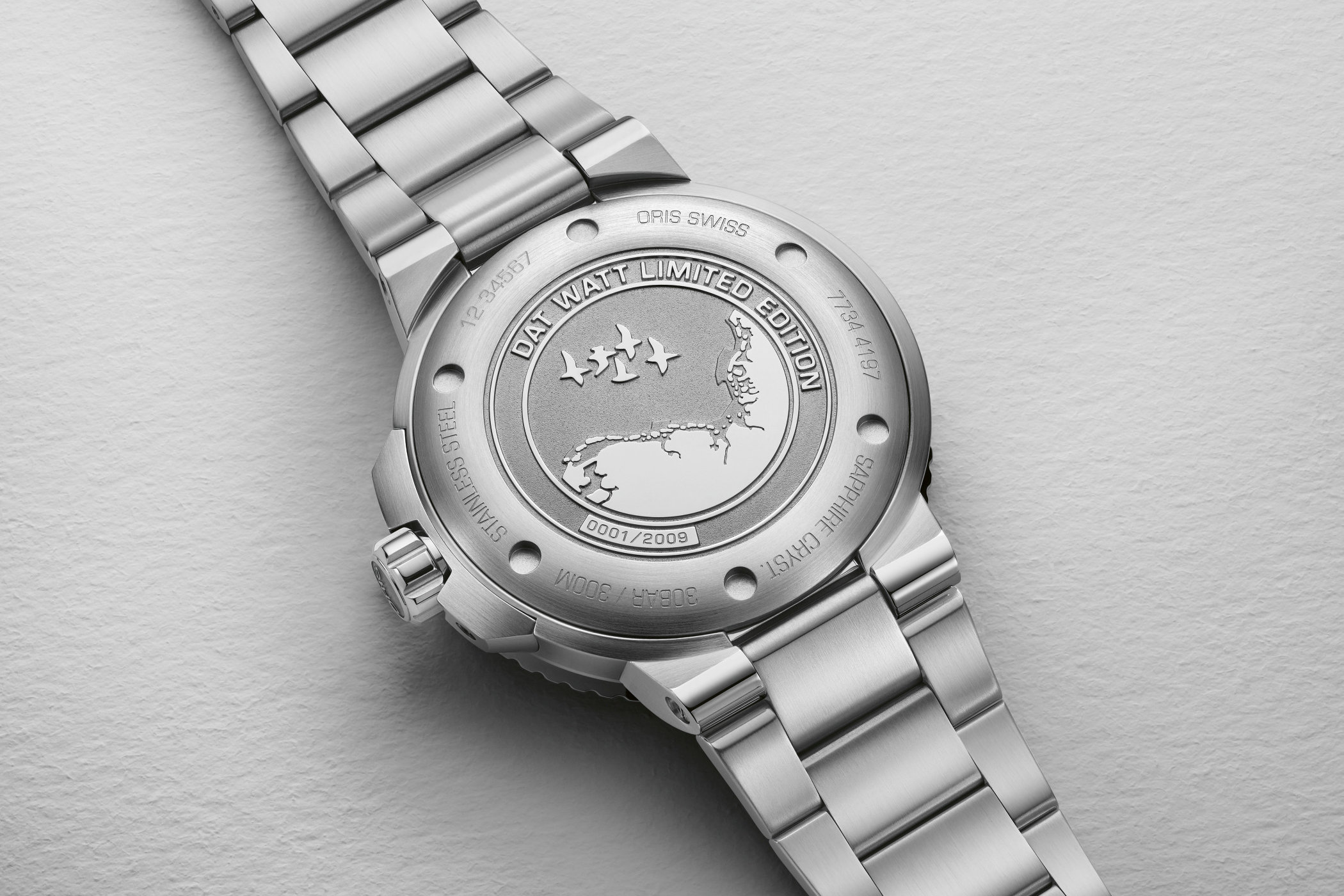BY HARLAN CHAPMAN-GREEN
Oris is a forward-thinking brand producing many quality timepieces of which a lot have unusual quirks. The recent Kermit edition that we got hands-on with at Watches & Wonders Geneva is an example of Oris’ line of thinking, but they’ve been doing that for well over a decade at this point.
A couple of years ago we wrote about a new limited edition Aquis piece called the Dat Watt special edition. That special edition had a special dial design and an extra hand which, together, indicated the lunar cycle which in turn reflects the tidal cycle (as the moon affects the sea levels). This is relevant as Dat Watt is the Frisian dialect for the Wadden Sea which stretches from the Lauwersmeer National Park in the Netherlands to the Nationalpark Vadehavet in Denmark, the most northerly point. For our UK readers, the most northerly point in Denmark is about level with Durham. The diversity of the wildlife in this area has resulted in all of the Wadden Sea being designated as a UNESCO World Heritage site.
I will say, the second-generation Dat Watt watch seems less impressive than the previous one. The 43.5mm case made from stainless steel and rated to 300m depths is likely to be imposing, as its impressive mass will be too. The green dial is also pleasant to look at and is inspired by the green salt marshes of the Wadden Sea, but the lunar indicator has been removed entirely and replaced with a simple date feature. Perhaps the previous Dat Watt edition was too expensive to make or didn’t sell too well? I can’t see a need to remove the indicator otherwise.
The caseback looks good, though, and has been engraved with an outline of the Wadden Sea and some birds in flight, when I mentioned the local fauna earlier it should be known that the Wadden Sea is a truck stop of sorts for an estimated 11 million birds. Beneath that caseback is the self-winding calibre 743 which is based on a Sellita SW220-1 calibre with a 4Hz beat rate and 38-hour power reserve. In our recent Longines HydroConquest article, there was a comment going on about why it’s so very disappointing to see brands not making their own movements. I wonder what our readers will have to say about this one. I’d like to see a longer power reserve model myself, but it’s not otherwise a deal breaker.
The watch comes with a finely crafted bracelet with a clasp extension and a blue rubber strap gets put in the box for good measure. It’s just as well, really, as the price is CHF2900, more than the Longines I mentioned above. Also, this watch is limited to 2009 examples, denoting the year the Wadden Sea became classed as a UNESCO World Heritage site. Also, part of the funds from the watch’s sales will go to supporting charitable causes conserving the Sea for the future.







